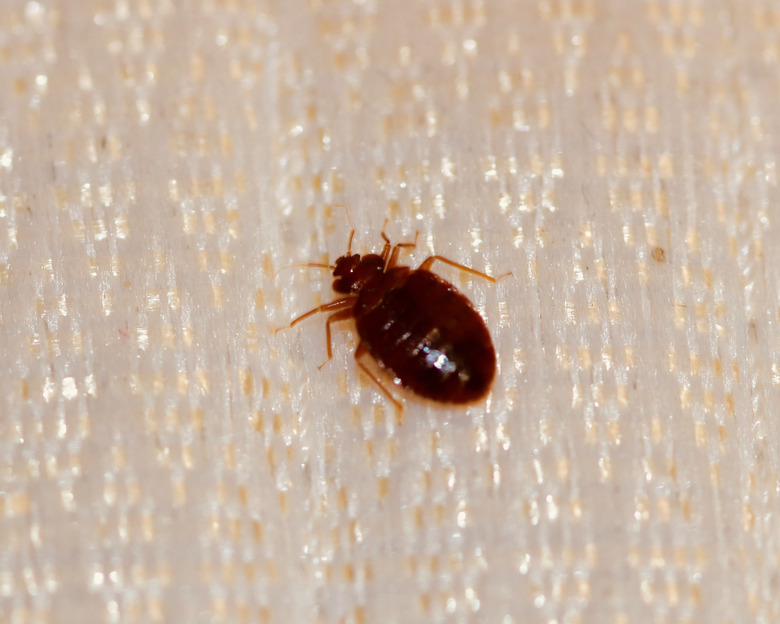How To Remove Black Spots On The Walls After Spraying For Bed Bugs
Bed bugs suck the blood of warm-blooded animals during the night. After they have a nocturnal blood meal, they digest the substance and eliminate it. The bug's defecation can leave behind small black, red or brown spots on walls, along baseboards, mattresses or other home surfaces. A large infestation of the pests can leave behind considerable staining. Even after successfully spraying for the pests and eliminating them, the homeowner may still have to clean up the unsightly fecal spots.
Common Signs of Wall Damage
Common Signs of Wall Damage
After consuming a nocturnal blood meal, the bed bug usually scampers off to congregate with its brethren during the daylight hours. The bugs often gather along baseboards, on the wall behind headboards, around electrical receptacles, under wallpaper or along the base of walls beside the floor. Even after the live bed bugs have been killed, the bug's skin casings, dead eggs and fecal stains will remain. The areas of the wall with fecal staining often secrete a sweet, musty odor. Bed bug fecal staining on walls often require cleaning and repair work to remove the unsightly spots after the bugs have been successfully eliminated.
Removing Bed Bug Stains
Removing Bed Bug Stains
Vacuum up all the bed bug casings and eggs. Promptly dispose of the vacuum cleaner bag. Wipe down the wall with warm, soapy water to try to remove the staining, or use a mild detergent. Lift the edges of wallpaper to peek beneath it to see if staining appears on the wall's surface. Cracks in wall plaster may also have staining. Clean out the cracks and repair them. Look along the wall's molding for any staining. Remove hanging pictures to check for stains on the wall behind them.
Repairing Damaged Walls
Repairing Damaged Walls
Remove damaged or heavily stained wallpaper. Clean up the fecal residue beneath old wallpaper with warm, soapy water. Make sure all fecal staining has been successfully removed before hanging newwall paper. Clean up all stains on painted walls before repainting so the blood does not seep through the new paint. Caulk all cracks along baseboards and other molding to prevent any future bed bugs from crawling into the cracks or gaps.
Treating for Bed Bugs
Treating for Bed Bugs
The U.S. Environmental Protection Agency recognizes more than 300 pesticide spray products for the treatment of bed bugs. Always follow the directions on the pesticide's label when applying to control bed bugs, or hire or pest control professional for help with the problem. Spot spray treatments, known as residual insecticides, usually work best if the wall crevices and cracks have been thoroughly cleaned of eggs, dirt, insect casings and fecal blood prior to spraying, according to the Ohio State University Extension.
References
- University of Nebraska-Lincoln Extension; Managing Bed Bugs; Barb Ogg, Ph.D.; April 2010
- Ohio State University Extension: Mystery Bugs and Bites
- Cornell University Cooperative Extenstion; Bed Bugs Are Back; Dr. Jody Gangloff-Kaufmann and Jill Shultz
- U.S. Environmental Protection Agency: Bed Bug Information
